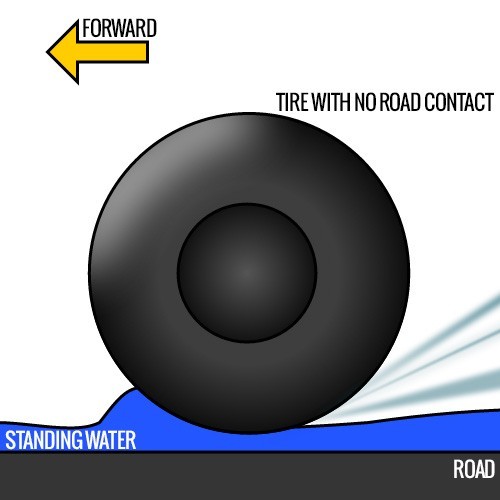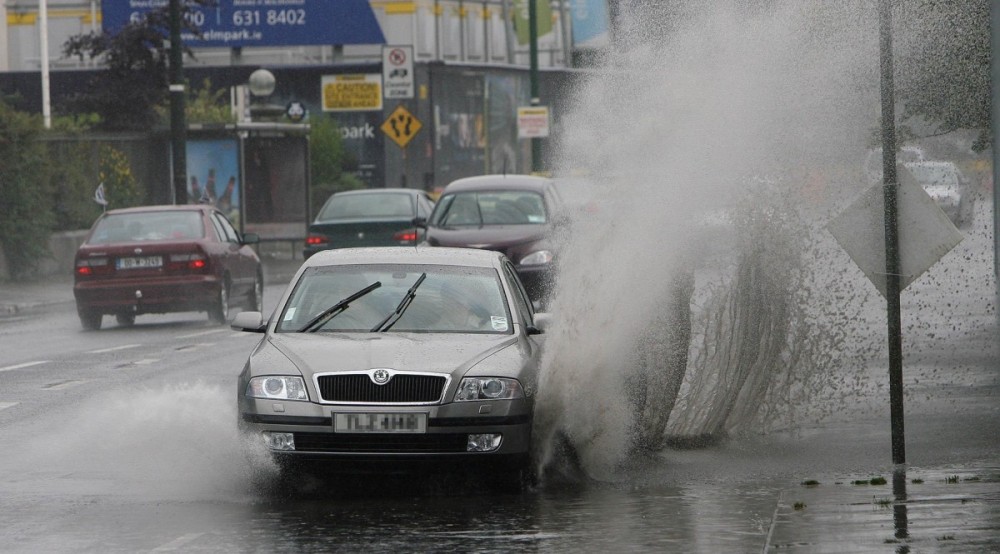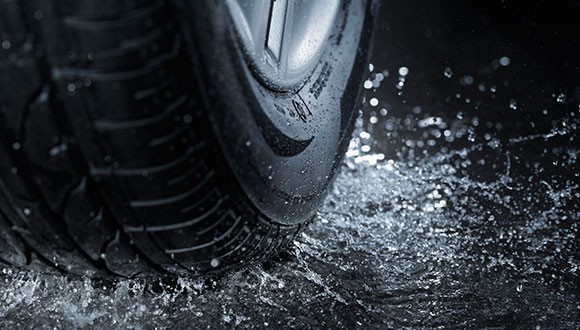What to do About Hydroplaning
It’s probably happened to you more than a few times, especially if you live in regions of the country where it rains a lot, such as Portland, Seattle and Mobile, Alabama. It’s always a scary feeling when you car hydroplanes, because suddenly you feel like you’re losing control of the vehicle, which is exactly what’s happening.
No matter where you live, sooner or later you might find yourself in a situation where your car is hydroplaning. Understanding what hydroplaning is and how it works will help you manage the situation safely and without damaging your car.

What is Hydroplaning?
When a car hydroplanes, a layer of water actually gets between the tires and the surface of the road. This happens because the tire is unable to push the water out of the way. Sometimes this is due to poor road design, since most modern roads are engineered to slope upward from both shoulders slightly, peeking in the middle of the road so water does not collect on the surface. In order to hydroplane, a car must be crossing water that is at least a tenth of an inch deep, or 0.3 centimeters. In addition, the car must be traveling at least 50 mph or faster. Another potential cause of the situation is tire tread wear.
What Happens from Hydroplaning?
Whatever the reason, when your car hydroplanes you essentially lose control of which direction you go. You also can't stop the car, because braking depends on friction between the surface of the road and the tires. While it might seem surprising to most people, all-wheel drive vehicles are the most likely candidates for hydroplaning simply because their electronic differentials will automatically send power from the front to the rear tires, making the situation even worse. Of course, the heavier the vehicle, the less likely it is to hydroplane.
The sad truth is that the average person has absolutely no idea what to do when their car hydroplanes. Most drivers panic, and oftentimes the situation ends up with an accident that can potentially be serious and sometimes fatal. Because of this problem, governments are constantly working on new drainage solutions for roads, especially in areas where rainfall is constant or experience flash floods on a regular basis. Tire companies are also working to combat the problem by creating tires that have tread designs set up to channel water away from the area of the tire, creating a dry spot and maintaining contact between the rubber and the road.

What You Should Do If You’re Hydroplaning
No matter what kind of vehicle you drive, there are some things you can do to avoid hydroplaning in the first place. The most important thing is to slow down when there is water on the road. Speed is the biggest factor that figures into whether a car will hydroplane or not, so when it starts to rain, it is wise to drop your speed a bit. If you see standing water on the road, you should slow down even more. In the event you still hydroplane, you will be in less danger if you are traveling at a lower speed. You need to change out your tires once the tread is too worn, because tires that are almost balding will hydroplane like they are ice skates.
Even if you still hydroplane, despite the fact you have taken steps to avoid it, you must first stay calm no matter what. You should avoid stomping on the brakes or yanking on the steering wheel, because doing so can make the situation even worse. Instead, grip the steering wheel fairly tight and steer in a straight line. You also must immediately remove your foot from the accelerator pedal. After you have done that, you simply wait for the car to coast to the point that you have control again.
Stay safe and be alert whenever the streets are wet and if you encounter hydroplaning, follow these simple instructions and you’ll come up out just fine, or as we might say-swimmingly!
At AutoBody-Review.com, we post each and every customer review we receive-both good and bad. We never filter our reviews to “help” a body shop look good and our strict processes prevent phony or fake reviews from being posted to our site. For pure, unadulterated and 100% objective reviews, rely on AutoBody-Review.com each and every time.


Ed Attanasio
Editor, AutoBody-Review.com
Ed has been a professional writer for more than 35 years and his specialties include B2B reporting, blogging, ad copywriting, public relations and general editorial.

